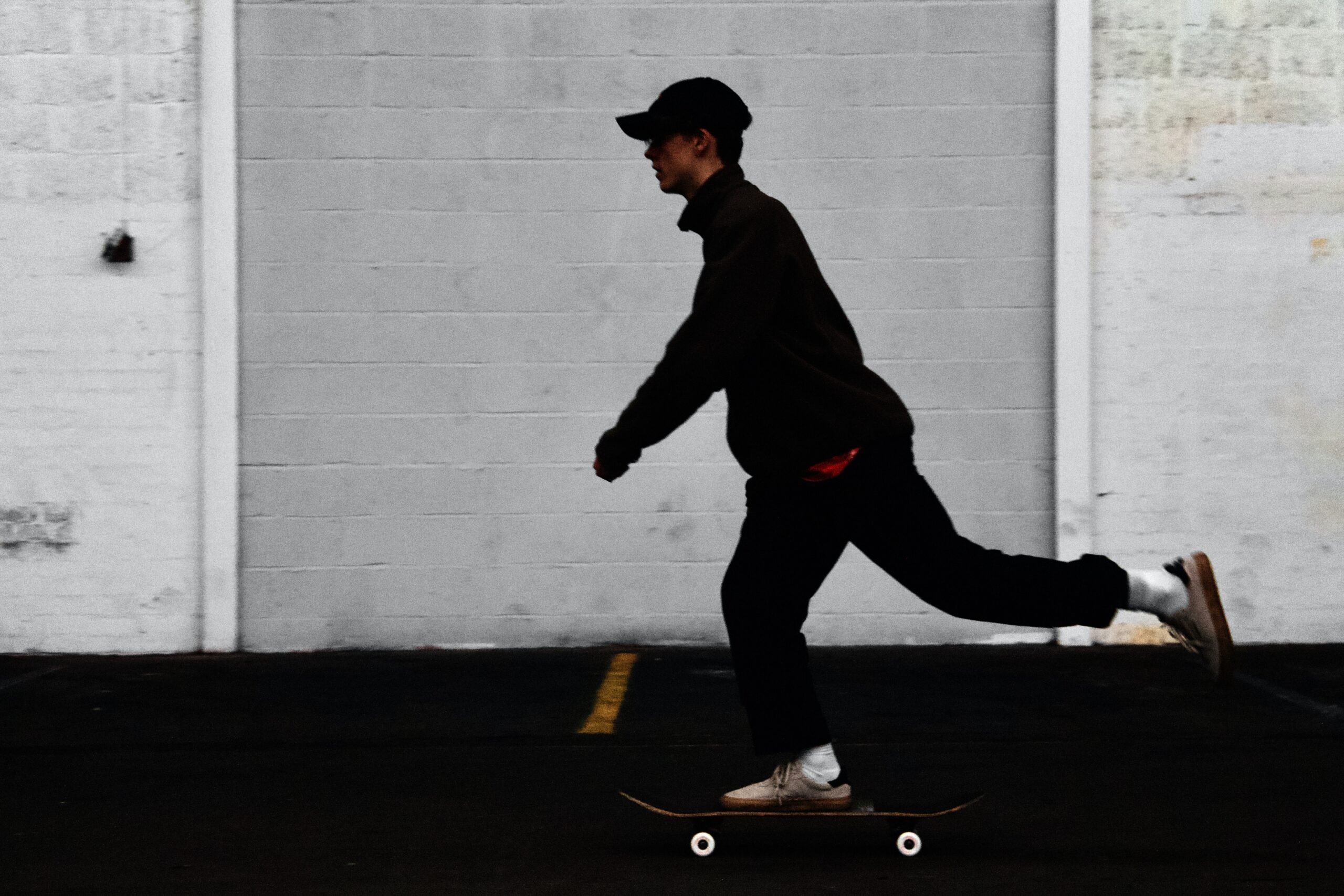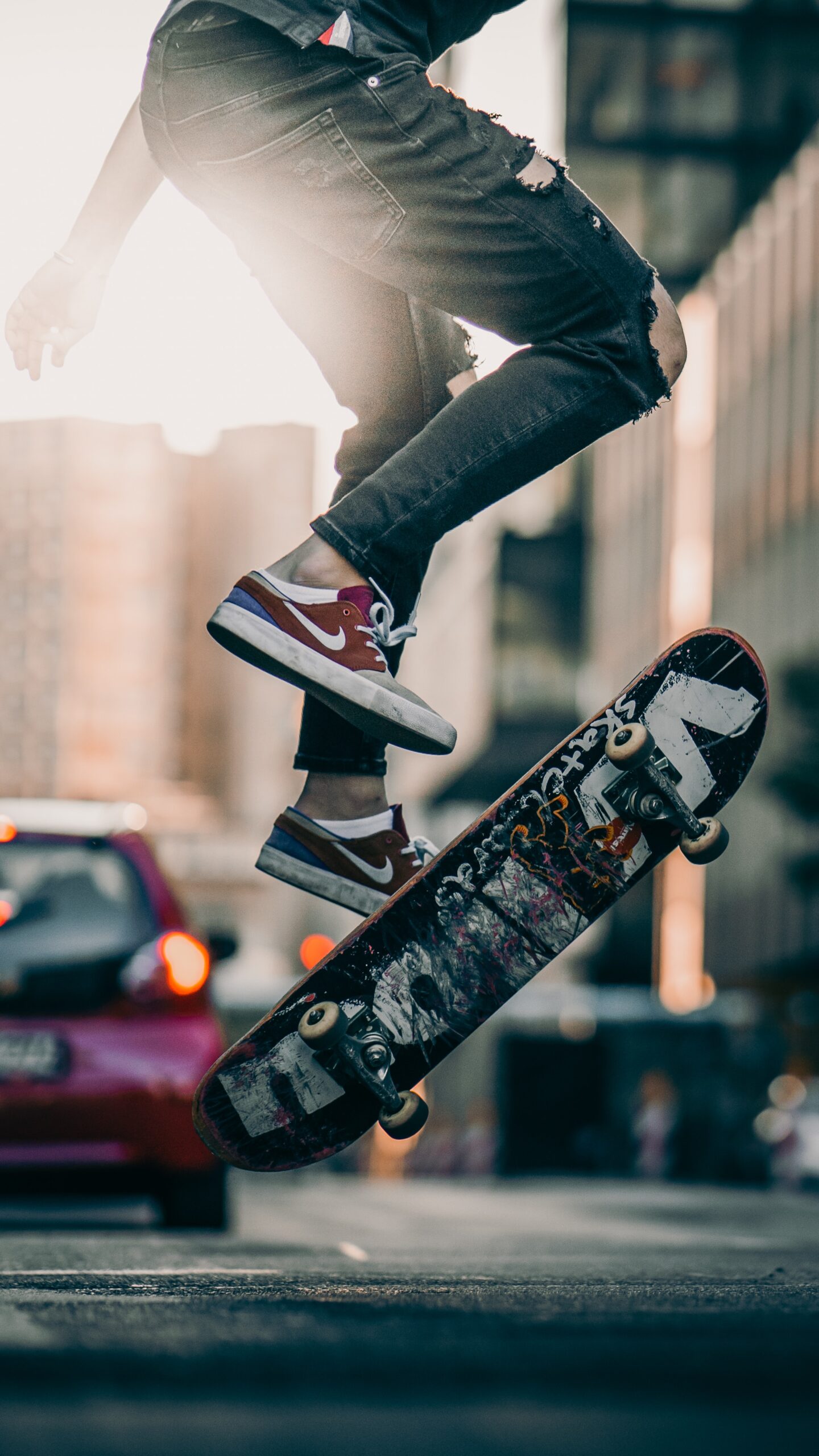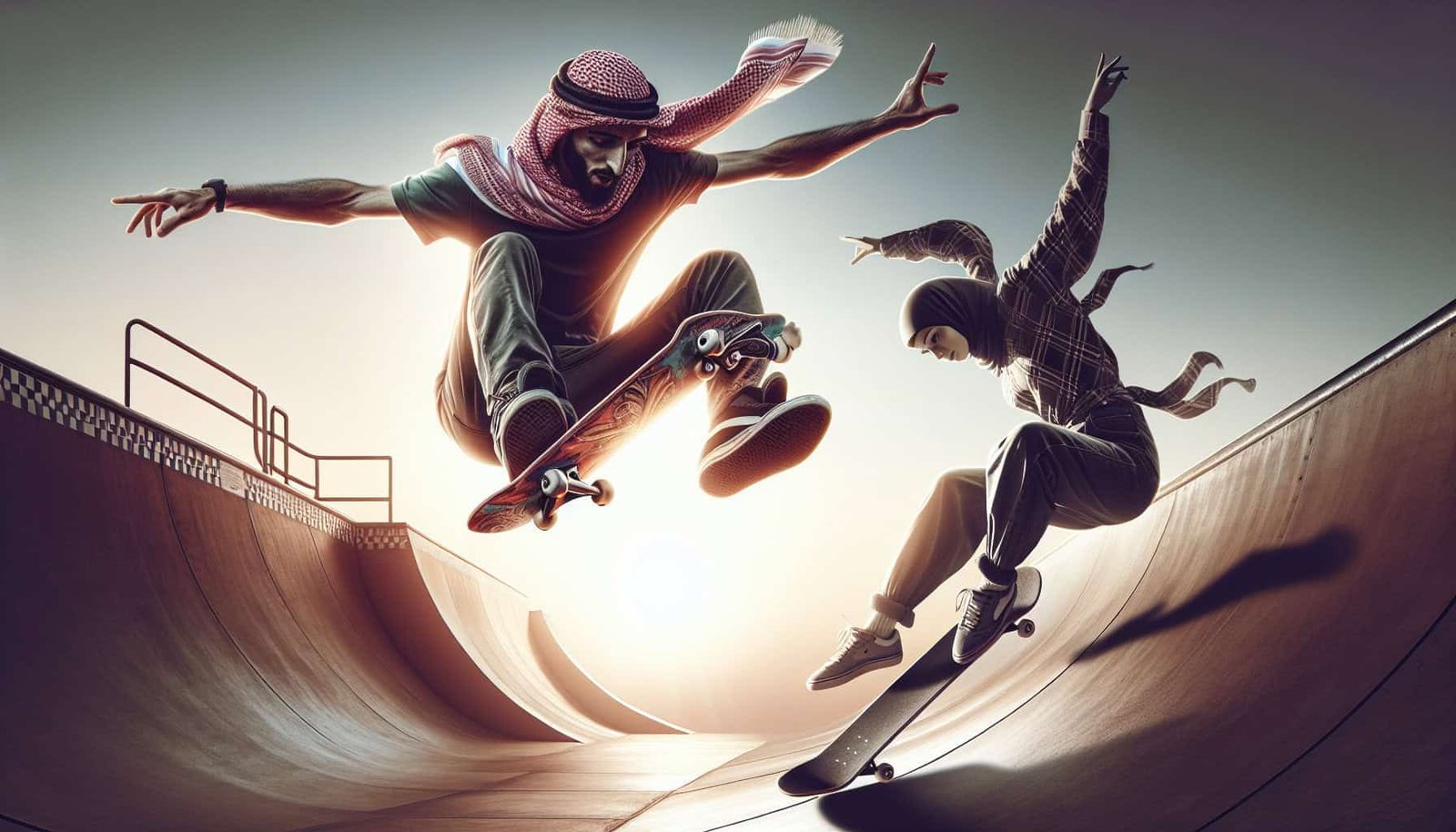If you’ve ever found yourself staring in awe at skateboarders effortlessly gliding across ramps and rails, then you’ve probably wondered how they pull off those impressive tricks like tail drops and tail stalls. In this article, we’ll guide you through the step-by-step process of executing these tricks with ease and precision. So, grab your board and get ready to elevate your skateboarding skills to new heights!
Gear and Safety
Skateboarding is an exhilarating sport that requires the right gear and safety precautions to ensure a fun and injury-free experience. In this section, we’ll discuss the importance of choosing the right skateboard, wearing protective gear, and finding a suitable location.
Choosing the Right Skateboard
When it comes to executing tail drops and tail stalls, having the right skateboard is crucial. You’ll want a skateboard that is sturdy, durable, and suitable for performing tricks. A standard skateboard deck with a length of 31-33 inches and a width of 7.5-8.5 inches is a good starting point. Additionally, make sure the skateboard has quality grip tape, trucks, and wheels that are appropriate for your skill level and the type of terrain you’ll be riding on.
Wearing Protective Gear
Your safety should always be a top priority when skateboarding. Wearing protective gear can significantly reduce the risk of injuries. A helmet is an absolute must-have, as it protects your head from potential impacts. Elbow and knee pads, as well as wrist guards, can also provide crucial protection in case of falls or collisions. Don’t underestimate the importance of wearing proper protective gear – it can save you from serious injuries.
Finding a Suitable Location
To execute tail drops and tail stalls successfully, you’ll need to find a suitable location. Look for skate parks or areas with ramps and halfpipes that cater to skateboarders. Make sure the location is designed for performing tricks and has a smooth surface to ensure a safe and smooth ride. Avoid public areas such as sidewalks or busy streets, as they may not provide the necessary space and conditions for executing these maneuvers.
Tail Drop Basics
To execute tail drops successfully, understanding the technique, practicing on flat ground, perfecting your ollie, approaching a drop, and committing to the tail drop are paramount. Let’s delve into these essential principles.
Understanding the Technique
A tail drop is a trick where you drop off a ledge or platform using your skateboard’s tail. It requires shifting your weight back to lift the front wheels and bring the tail down, allowing you to descend smoothly. To execute this trick, you’ll need a good sense of balance and control over your skateboard.
Practicing on Flat Ground
Before attempting a tail drop, it’s crucial to practice the basic techniques on flat ground. Start by getting comfortable with your ollie, which is a fundamental skateboarding trick. Work on popping your skateboard’s tail and jumping into the air, leveling out the board, and landing smoothly. This will help you build the foundational skills necessary for a successful tail drop.
Perfecting Your Ollie
To execute a tail drop correctly, it’s essential to perfect your ollie. The ollie allows you to lift your skateboard off the ground, an essential skill for tail drops. Practice your ollie repeatedly, focusing on getting a good pop from your tail, sliding your front foot up, leveling out the board, and landing solidly. This will ensure that you have the necessary control and technique for executing a tail drop smoothly.
Approaching a Drop
Approaching a drop is a crucial aspect of performing a tail drop successfully. As you approach the ledge or platform, maintain a steady speed by pumping your legs up and down. Keep your eyes focused on the drop and position your body in a comfortable and balanced stance. This will help you maintain control as you enter the tail drop.
Committing to the Tail Drop
Commitment is key when it comes to executing a tail drop. As you approach the drop, shift your weight to the back of the skateboard to lift the front wheels. Be confident and fully commit to the drop, allowing the tail of your skateboard to make contact with the surface first. Trust your skills and technique, and remember to stay relaxed throughout the trick.

Executing a Tail Drop
Now that you have a solid understanding of the basics, let’s dive into the process of executing a tail drop. This section will cover identifying a suitable drop, preparing for the drop, approaching the drop, dropping your tail, and landing the drop.
Identifying a Suitable Drop
When executing a tail drop, it’s crucial to choose a suitable drop that matches your skill level. Start with smaller drops, such as curbs or small ledges, and gradually progress to larger drops as you gain confidence and experience. Make sure the drop has a smooth landing surface and is free from obstacles that could hinder your execution.
Preparing for the Drop
Before attempting the drop, prepare yourself mentally and physically. Visualize the drop in your mind and go through the steps you’ve learned. Ensure that all protective gear is properly worn and secured. Take a deep breath, relax your body, and clear your mind. Being calm and focused will improve your chances of executing the tail drop successfully.
Approaching the Drop
Approach the drop with a balanced stance and a steady speed. Keep your eyes fixated on the landing spot and maintain your composure. As you approach the edge, bend your knees slightly to absorb the impact of the drop and maintain stability. Remember to stay relaxed and trust your skills – you’ve got this!
Dropping Your Tail
As you reach the edge of the drop, shift your weight back to lift the front wheels and initiate the drop. Keep your body centered over the skateboard and maintain control. Let the tail of your skateboard make contact with the landing surface, ensuring a smooth and stable descent. Stay focused and maintain your balance throughout, adjusting your body position as needed.
Landing the Drop
To land the drop successfully, focus on maintaining your balance and stability. As your tail makes contact with the landing surface, bend your knees to absorb the impact and distribute your weight evenly. Keep your eyes on the ground and adjust your body position to align with the landing surface. Regain control of the skateboard, and remember to roll away smoothly. Celebrate your accomplishment – you’ve executed a tail drop!
Advanced Tail Drop Variations
Once you’ve mastered the art of tail drops, it’s time to explore advanced variations. This section will introduce you to stair set tail drops, hubba tail drops, and handrail tail drops.
Stair Set Tail Drops
Stair set tail drops are a thrilling variation that combines the excitement of stair sets with the technicality of tail drops. Find a set of stairs with an appropriate number of steps for your skill level. Approach the stairs with confidence, following the same principles as a regular tail drop. Ensure that your technique, balance, and control are honed before attempting this advanced variation.
Hubba Tail Drops
Hubba tail drops involve dropping off a hubba ledge and executing a tail drop mid-air. Look for a hubba ledge that suits your skill level and stance. Approach the ledge with speed and commitment, focusing on your technique and body alignment. As you drop off the ledge, initiate the tail drop and remain composed throughout the trick. The combination of technicality and style in hubba tail drops will impress both fellow skaters and spectators.
Handrail Tail Drops
For the truly daring, handrail tail drops offer an adrenaline-pumping challenge. This advanced variation requires expert control, balance, and confidence. Identify a handrail with an appropriate size and difficulty level, ensuring that it is within your skill range. Approach the handrail with speed, precision, and full commitment. As you drop off the rail, execute the tail drop flawlessly. This high-risk maneuver requires extensive practice and should only be attempted by experienced skateboarders.

Tail Stall Basics
Tail stalls are an essential skill to master for any skateboarder looking to progress their trick repertoire. In this section, we’ll cover the basics of tail stalls, understanding the technique, mastering balance and control, and practicing on a halfpipe.
Understanding the Technique
A tail stall involves balancing on the tail of your skateboard while stationary or moving slowly. This trick requires careful weight distribution and precise body positioning to maintain stability. Understanding the technique is key to executing a tail stall successfully.
Mastering Balance and Control
To perform a tail stall, you need to have a solid foundation of balance and control on your skateboard. Practice maintaining your balance while stationary, shifting your weight between the nose and tail. Focus on distributing your weight evenly and keeping your body centered over the skateboard. As you build confidence, try shifting your weight back to the tail while moving slowly to replicate the tail stall motion.
Practicing on a Halfpipe
A halfpipe is an excellent training ground for mastering tail stalls. Find a skate park that has a well-maintained halfpipe and suits your skill level. Begin by rolling up and down the transition, getting comfortable with the slope and feeling the flow. Gradually introduce tail stalls by shifting your weight back as you approach the coping, balancing on the tail, and holding the position. Practice this motion repeatedly to build muscle memory and improve your balance.
Executing a Tail Stall
Now that you grasp the basics, let’s dive into executing a tail stall. This section will cover approaching the halfpipe, generating enough speed, popping your tail, balancing in the stall, and exiting the stall smoothly.
Approaching the Halfpipe
Approach the halfpipe with a comfortable and balanced stance. Generate enough speed by pumping your legs up and down as you ride up the transition. The more speed you have, the easier it will be to execute a tail stall. Keep your eyes focused on the coping and be prepared to shift your weight back as you reach the top of the halfpipe.
Generating Enough Speed
To perform a successful tail stall, it’s crucial to generate enough speed. Utilize the pumping technique by extending your legs and compressing them as you ride up and down the transition. This pumping action transfers your energy into the skateboard, propelling you upward with increased speed. Experiment with different pumping techniques until you find a rhythm that works for you.
Popping Your Tail
As you approach the coping, prepare to execute the tail stall by popping your tail. Shift your weight to your back foot and press down on the tail firmly. This action, known as popping, lifts the front wheels of your skateboard off the coping, allowing the tail to make contact. Practice this motion repeatedly to ensure a smooth and coordinated pop.
Balancing in the Stall
Once the tail makes contact with the coping, focus on maintaining your balance and stability. Keep your weight centered over the tail, distributing it evenly to avoid falling back. Engage your core muscles for stability and use your arms for counterbalance. Proper body positioning is crucial for staying balanced during the stall. Stay relaxed and confident in your ability to maintain the tail stall.
Exiting the Stall
When you’re ready to exit the stall, shift your weight forward and lean onto your front foot. This will release the tail from the coping and allow you to roll away smoothly. Keep your eyes focused on the transition and be prepared to transition your weight smoothly. As you roll forward, bend your knees slightly to absorb any impact and regain control of your skateboard. Congratulations – you’ve successfully executed a tail stall!

Advanced Tail Stall Variations
Once you’ve mastered the basics of tail stalls, it’s time to explore advanced variations. This section will introduce you to rail and ledge tail stalls, fakie tail stalls, and tail stall shuv-its.
Rail and Ledge Tail Stalls
Rail and ledge tail stalls add an extra level of difficulty and style to your trick repertoire. Find a rail or ledge that suits your skill level and stance. As you approach the rail or ledge, initiate a tail stall by popping your tail and balancing on the tail. Focus on maintaining your balance and stability throughout the trick. Experiment with different rail and ledge heights to challenge yourself and broaden your range of tricks.
Fakie Tail Stall
The fakie tail stall is a variation where you approach the stall in a fakie position, meaning your back is facing the direction of travel. This trick adds a unique element to your tail stall repertoire. Approach the stall in a fakie stance, execute the tail stall with confidence, and maintain your balance throughout. The fakie tail stall requires excellent control and body positioning to execute smoothly.
Tail Stall Shuv-it
The tail stall shuv-it combines the technicality of a shuv-it with the balance and control of a tail stall. Approach the stall as you would for a standard tail stall, execute the stall, and simultaneously initiate a shuv-it motion by twisting your body and flicking the board with your back foot. Focus on maintaining your balance while controlling the board’s rotation. This advanced variation requires precise timing and coordination.
Common Mistakes and Troubleshooting
As you progress in executing tail drops and tail stalls, it’s essential to be aware of common mistakes and troubleshooting techniques. This section will cover losing balance during tail drops, not properly popping your tail, difficulty committing to the drop, and lack of confidence in tail stalls.
Losing Balance during Tail Drops
One common mistake during tail drops is losing balance or control during the descent. To troubleshoot this issue, focus on maintaining a centered and balanced stance throughout the trick. Keep your weight evenly distributed and avoid leaning too far forward or back. Additionally, make sure your body is relaxed and your movements are fluid. Practicing proper technique and building muscle memory through repetition can help overcome this challenge.
Not Properly Popping Your Tail
Properly popping your tail is crucial for executing a successful tail drop. If you’re having trouble with this aspect, check your foot placement and technique. Ensure that your back foot is positioned correctly on the tail and that you’re applying enough pressure to get a solid pop. Practice popping your tail on flat ground repeatedly to build strength and coordination in this fundamental movement.
Difficulty Committing to the Drop
Committing to the drop can be a mental hurdle for many skateboarders. Overcoming this challenge requires building confidence in your skills and technique. Visualize the successful execution of the tail drop in your mind and focus on the steps you’ve learned. Trust your abilities and embrace the feeling of excitement and accomplishment that comes with executing the trick. With practice and perseverance, you’ll find it easier to commit to the drop.
Lack of Confidence in Tail Stalls
Tail stalls require balance, control, and confidence. If you find yourself lacking confidence in executing tail stalls, taking it back to the basics can be helpful. Spend more time practicing stationary tail stalls, focusing on maintaining balance and finding your center of gravity. As you build confidence, gradually introduce movement into your tail stalls. Patience and consistency are key – trust the process, and confidence will come.

Tips for Progression
Skateboarding progression is a journey that requires dedication, consistency, and a focus on learning and improving. In this section, we’ll provide you with some valuable tips to help you progress in executing tail drops and tail stalls.
Start with Small Drops and Stalls
When starting your journey in tail drops and tail stalls, it’s crucial to begin with smaller drops and stalls that match your skill level. Master the fundamentals and build confidence before moving on to more advanced variations. Starting small allows you to focus on technique, balance, and control, setting a solid foundation for future progress.
Seek Guidance from Experienced Skateboarders
Skateboarding is a community-driven sport, and guidance from experienced skateboarders can be invaluable. Seek out mentors or skateboarders who have mastered tail drops and tail stalls themselves. They can offer advice, provide feedback on your technique, and share valuable insights to help you progress more efficiently. Learning from someone who has already walked the path can shorten the learning curve significantly.
Consistency and Practice
Consistency and practice are the keys to success in any skateboarding endeavor. Dedicate regular practice sessions to honing your skills in tail drops and tail stalls. Set specific goals and work towards them methodically. Repetition is vital for building muscle memory and developing the necessary strength, coordination, and balance. As the saying goes, practice makes perfect.
Pushing Yourself but Staying Safe
Progression in skateboarding often involves pushing your limits and stepping outside of your comfort zone. However, it’s crucial to strike a balance between pushing yourself and staying safe. Gradually increase the difficulty of your tricks as you gain proficiency and confidence. Maintain awareness of your skill level and always prioritize safety by wearing the proper protective gear and utilizing suitable locations for your tricks.
Conclusion
Executing skateboard tail drops and tail stalls requires a combination of skill, technique, control, and dedication. With the right gear, safety precautions, and mindset, you can progress from basic tail drops on flat ground to advanced variations and masterful tail stalls on a halfpipe. Remember to approach each trick with confidence, commitment, and a focus on staying safe. Celebrate your accomplishments along the way, and most importantly, enjoy the exhilarating journey of skateboarding.

